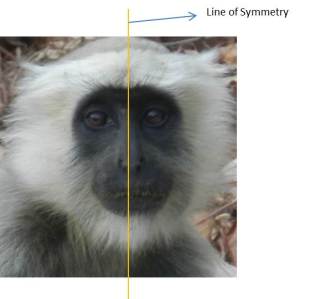Notes of chapter: Symmetry are presented below. Indepth notes along with worksheets and NCERT Solutions for Class 7.
(1)The quality of having exactly similar parts of different things is known as symmetry.
Eg:- Two pentagons ABCDE and FGHIJ

Types of symmetry
(i)An imaginary line of a figure which divides the figure in mirror image(exactly same)is known as line of symmetry.
Eg:– Real life examples are given below in which the line of symmetry has marked.
(a)

(b)

Lines of symmetry for regular polygons
(a)The regular polygons are symmetrical figures.
Eg:- Equilateral triangles are symmetrical figures.


(b)Each regular polygon has many lines of symmetry as it has sides.
Eg:-Equilateral triangle is a regular polygon.
It has three sides.
Hence, equilateral triangle has three lines of symmetry.
(c)The concept of line symmetry is closely related to mirror reflection. A shape has line symmetry when one half of it is the mirror image of the other half.

In the above diagram of square, both parts of square are mirror image of one another.
(d)While dealing with mirror reflection, care is needed to note down the left- right changes in the orientation.

(2)An object has rotational symmetry, if it rotates by 90 o about the fixed point and looks exactly the same.
The number of times when an object looks exactly same in one rotation is called order of rotational symmetry.
Eg:-
Consider a square with P as one of its corners.

Let us perform quarter turns about the centre of the square marked x.
P rotates 4 times and looks same.
Hence,
Order of rotational symmetry=4

Helping Topics